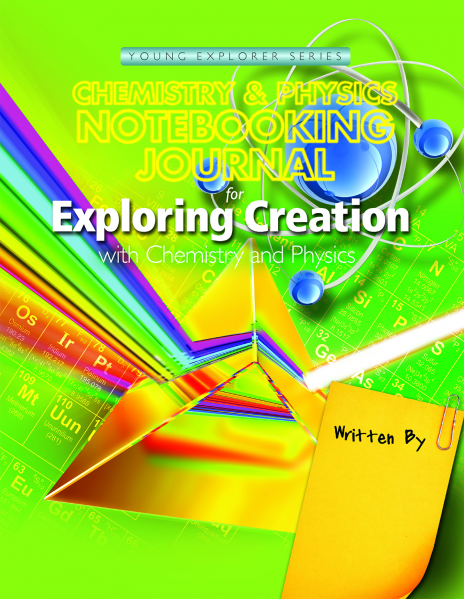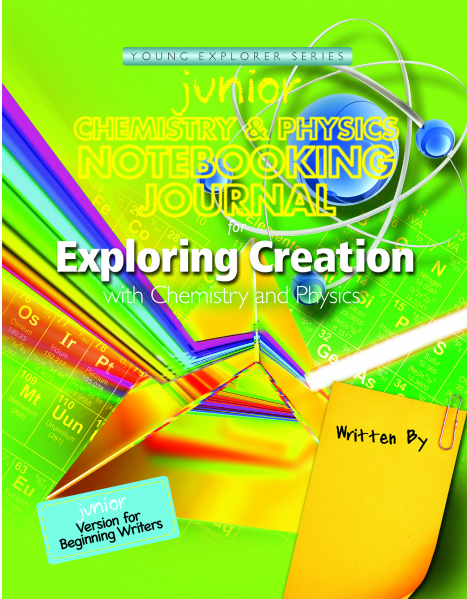I was asked to review the Apologia Educational Ministries Exploring Creation With Chemistry and Physics textbook with a Junior Notebooking Journal and a Notebooking Journal to accommodate my younger and older students.

The book is intended to be used with children in Grades K-6. I chose to use it with all three of my children, Grades 2, 6 and 8 and to read it aloud as a unit study and then conduct the experiments together.
First, let me just say wow! I absolutely love this curriculum! I think if I would have learned chemistry and physics with these books, I would have enjoyed it when I was still in school. The author of the curriculum is Jeannie Fulbright. She writes in a first person style, incorporating her own personal life experiences in some fun stories she shares throughout the book while keeping the book filled with scientifically factual presentations about chemistry and physics. At the same time, there are many references to how the Bible, God and scriptures relate to science.
First, let me just say wow! I absolutely love this curriculum! I think if I would have learned chemistry and physics with these books, I would have enjoyed it when I was still in school. The author of the curriculum is Jeannie Fulbright. She writes in a first person style, incorporating her own personal life experiences in some fun stories she shares throughout the book while keeping the book filled with scientifically factual presentations about chemistry and physics. At the same time, there are many references to how the Bible, God and scriptures relate to science.
The book is designed to read a portion and then do an experiment, explained in highlighted text boxes labeled "Try It". At the end of each section, there is another more extensive experiment or two to try along with notebooking page assignments, scripture tie-ins, and general overview questions.
I read to all three of my children, ages 7 (Grade 2), 11 (Grade 6) and 13 (Grade 8) as my children listened and colored in the Notebooking pages. When we came to a "Try It" experiment, we did it together. The older children grasped the concepts fairly quickly, while my youngest seemed to take in at least a general overview of many of the concepts. Plus, she had the most fun with the hands-on experiments.
The notebook pages provided a huge variety of activities, from coloring to writing scripts to colorful cut-out and put-together booklets:
The hands-on experiments were very fun with easy-to-follow instructions and pictures. I really liked how the science book listed everything we needed for each experiment, so there were no surprises, and I could be completely prepared before my kids got started with each new experiment.
 |
| An experiment in density and buoyancy |
The Notebooks come in two different levels. There is a Junior Notebook and a Notebook for older students. The Junior Notebook is designed for children whose handwriting skills are not as defined, or for younger elementary aged students. The other notebooking pages are designed for older elementary aged students, or those who have mastered handwriting skills and will not tire easily while writing. I really loved having an option to accommodate each of my children's needs.
 |
| Scripture Copywork related to science - Younger child printing |
 |
| The same scripture in cursive, for my older students |
 |
| Lava lamp experiment with oil, vinegar, Alka Seltzer tablets in the blue, and water, oil and Alka Seltzer tablets in the green. |
I had wanted to check out Apologia for years, and I am so glad I had the opportunity to review this with my children. I found it to be a very sound curriculum and easy to follow. I loved how it tied in scripture and scientific concepts discussed in the Bible with the scientific learning facts. We all love this curriculum.
Apologia presents science in light of a Christian worldview. Since this is the worldview our homeschool operates under, I really appreciate this information at my fingertips.
Please read here what other members of the Schoohouse Review Crew thought, or click on the picture below:





















No comments:
Post a Comment